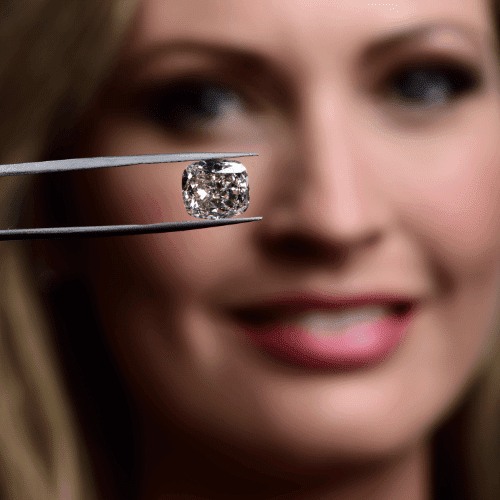Gems Redefined: The Art of Lab-Grown Creation
In recent years, the landscape of luxury gemstones has experienced a remarkable transformation, mainly driven by the rise of cultured diamonds. These breathtaking stones, which replicate the beauty and brilliance of their authentic counterparts, are changing our understanding of value, sustainability, and ethical consumption in the jewelry industry. As consumers gradually seek alternatives to mined diamonds, lab grown diamonds have emerged as a appealing option, offering a combination of scientific innovation and timeless elegance.
The process of creating lab grown diamonds is as captivating as the gems themselves. Through advanced technological methods, these diamonds are crafted in managed environments that replicate the natural conditions under which diamonds form deep within the Earth's mantle. By harnessing the power of technology and embracing environmental stewardship, lab grown diamonds are not only redefining luxury but also carving the way for a more sustainable future. In this article, we will examine the complex methods of lab diamond creation and discuss what sets these gems apart, including a unique carat review that highlights their distinct features.
Comprehending Lab-Created Diamonds

Synthetic diamonds are stones that have the equivalent physical, chemical, and optical properties as natural diamonds. They are produced using cutting-edge technological techniques that mimic the settings under which natural diamonds form within the Earth. This innovative methodology allows for the manufacturing of diamonds that are not only beautiful but also responsibly obtained, providing an desirable choice for conscious consumers.
The two techniques for growing lab-grown diamonds are HPHT and CVD. The HPHT process mimics the intense heat and pressure found in the Earth's interior, where genuine diamonds develop. Meanwhile, CVD uses carbon-rich gases to apply carbon atoms onto a substrate, gradually growing diamond crystals. Both processes produce diamonds that can equal or even better the quality of natural stones.
Synthetic diamonds come in various shapes, scales, and grades, often with characteristics comparable to their earth-mined counterparts. They are usually rated using the identical criteria as classic diamonds, including the renowned four Cs: carat weight, clarity, color, and cut. Grasping these factors is vital for individuals planning a purchase, as they directly influence the diamond's aesthetic and value, making lab-created options an appealing choice for engagement rings and further fine jewelry.
Reviewing Carrot Quality
When assessing lab-grown diamonds, one of the most crucial factors to take into account is the weight in carats. Carat indicates the size and weight of the diamond, with one carat equating to two hundred mg. Generally, the higher the carat weight, the larger the diamond appears, and this impacts its worth. However, buyers should not focus solely on carat weight, as this fails to represent the diamond's overall quality or aesthetic attractiveness.
In addition to carat weight, the cut of the diamond greatly influences in how the stone glitters and reflects light. A well-cut diamond can look larger and more brilliant than a badly cut diamond of the identical carat weight. Therefore, when evaluating a diamond's quality, it is essential to consider how the cut improves its beauty together with its carat size. A well-balanced combination can lead to a visually appealing appearance.
In conclusion, lab-grown diamonds often present an wide range of carat choices compared to their natural versions. This availability allows customers to choose a diamond that suits their financial plan and size preference without sacrificing quality. Consumers should take benefit of the variety and evaluate numerous options, considering both carat weight and cut quality to ensure they discover the ideal stone that meets their expectations.
A Outlook of Diamond Sales
As lab-grown diamonds continue to gain popularity, the environment of diamond retail is seeing substantial transformation. rare carat review are valuing ethical sourcing and environmental sustainability, making man-made options increasingly appealing. Retailers are now adapting to these demands, providing a wider selection of lab-grown diamonds that meet or outperform the quality of natural stones. This transition not only serves a growing market but also helps redefining the value of diamonds in the eyes of consumers.
With breakthroughs in technology and enhanced understanding of production processes, prices of lab-grown diamonds are becoming less prohibitive. This availability of diamonds allows a broader audience to access the luxury of owning a diamond without the stigma attached to mining practices. Retailers are taking advantage of this trend by creating increasingly engaging and educational shopping experiences, emphasizing the special qualities and benefits of lab-grown gems to inform buyers on their choices.
As the market develops, we can look forward to to see new models of commerce emerge, including e-commerce sites and membership options that facilitate simpler access to lab-grown diamonds. The combination of clarity in sourcing, better customer education, and forward-thinking retail strategies will most likely shape the future of the diamond industry. Retailers will have to adjust to changing consumer expectations, ensuring that they highlight the value proposition of lab-grown options, ensuring the future of diamond retail stays bright and evolving.